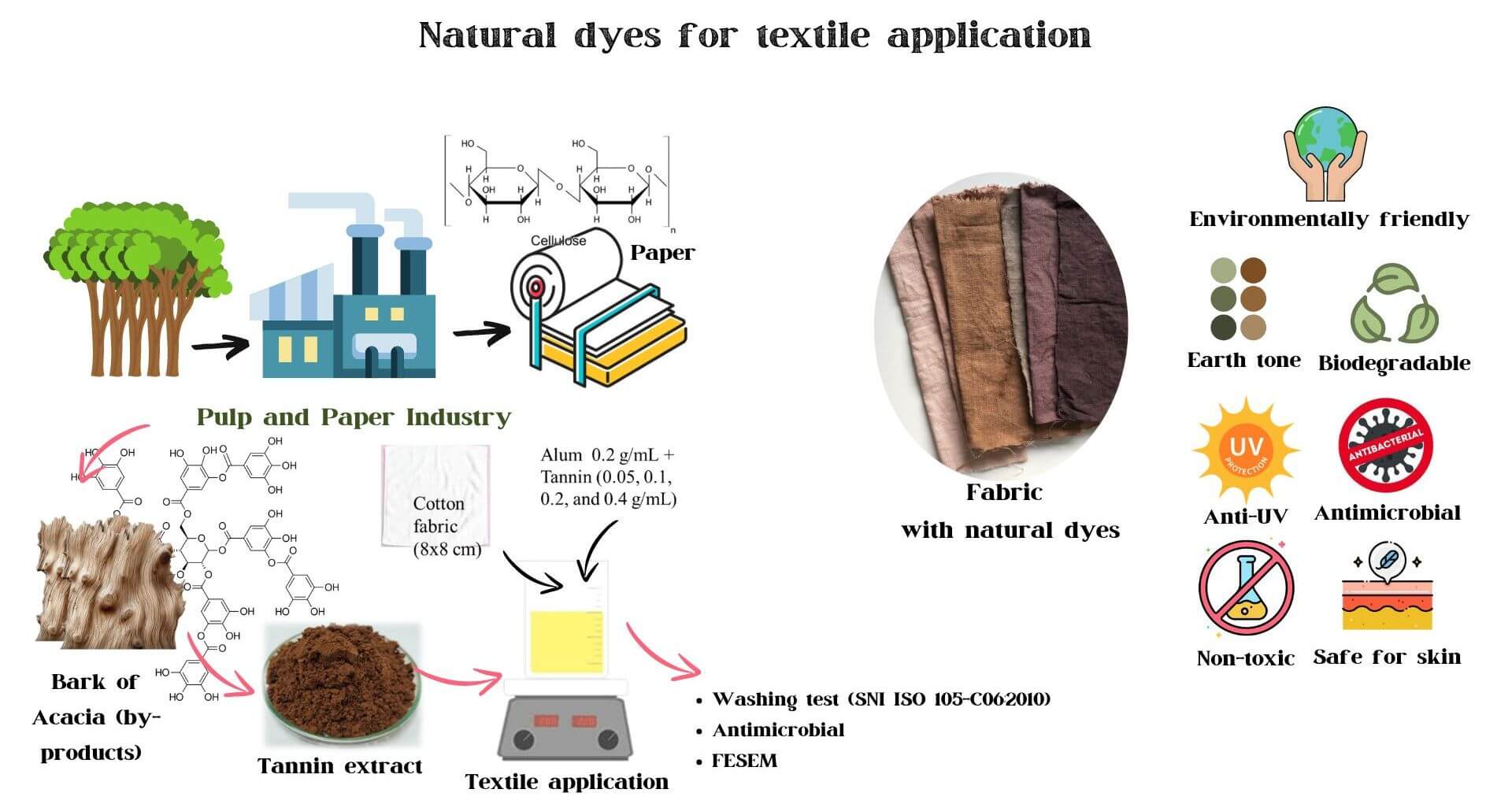 Open Access
Open Access
ARTICLE
Tannins from Acacia mangium Bark as Natural Dyes for Textiles: Characteristics and Applications
1 Research Center for Biomass and Bioproducts, Research Organization for Life Sciences and Environment, National Research and Innovation Agency (BRIN), Jl. Raya Bogor KM 46, Cibinong, Bogor, 16911, Indonesia
2 Department of Forest Product Technology, Faculty of Forestry, IPB University, Bogor, 16680, Indonesia
3 Research Institute for Sustainable Humanosphere, Kyoto University, Uji, Kyoto, 611-0011, Japan
4 Research Center for Applied Microbiology, Research Organization for Life Sciences and Environment, National Research and Innovation Agency (BRIN), Jl. Raya Bogor KM 46, Cibinong, Bogor, 16911, Indonesia
* Corresponding Author: Maya Ismayati. Email:
(This article belongs to the Special Issue: Recent Advances on Renewable Materials)
Journal of Renewable Materials 2024, 12(9), 1625-1637. https://doi.org/10.32604/jrm.2024.054739
Received 06 June 2024; Accepted 01 August 2024; Issue published 25 September 2024
Abstract
Tannins are capable of producing natural dyes with antioxidant and antibacterial propertis, while synthetic dyes are commonly used in the textile industry, causing environmental issues like water pollution. This research aims to utilize waste tannins as natural dyes as an alternative to synthetic dyes. This study examined the effect of the extraction method on tannin properties such as phenolic content, antioxidants, and antibacterial activity. In addition, Pyrolysis Gas Chromatography‒Mass Spectrometry (Py-GCMS) analysis was used to identify the effect of extraction temperature on the chemical elucidation of tannin. The effect of tannin concentration was evaluated against four bacteria that are usually found on human skin: Staphylococcus epidermidis, Bacillus subtilis, Propionibacterium acnes, and Staphylococcus aureus. Extraction temperature significantly influences the chemical composition of tannin, which leads to different antioxidant properties. The maximum antibacterial properties of tannin were obtained at 90°C with the inhibition zone in the range of 0.9–1.0 mm against four bacteria, tannin yield of 26.59%, Gallic Acid Equivalents or total phenolic content (GAE) of 40.30 mg/g, and Radical Scavenging Activity or antioxidant activity (RSA) of 89.88%. Moreover, the concentration of tannin was significantly linear with its antibacterial properties. Tannin was successfully applied to the textile by using alum as a mordanting agent to create an antibacterial textile. The textile’s bacterial structure damage was analyzed under Field Emission Scanning Electron Microscopy (FESEM). After 50 washings, tannin-textiles with alum-modified properties remained stable compared to those without alum, with S. aureus and S. epidermidis being the most vulnerable bacteria, as confirmed by FESEM images. Hence, tannin is a feasible alternative to harmful and nondegradable synthetic dyes and antibacterial agents.Graphic Abstract

Keywords
Cite This Article
 Copyright © 2024 The Author(s). Published by Tech Science Press.
Copyright © 2024 The Author(s). Published by Tech Science Press.This work is licensed under a Creative Commons Attribution 4.0 International License , which permits unrestricted use, distribution, and reproduction in any medium, provided the original work is properly cited.


 Submit a Paper
Submit a Paper Propose a Special lssue
Propose a Special lssue View Full Text
View Full Text Download PDF
Download PDF Downloads
Downloads
 Citation Tools
Citation Tools